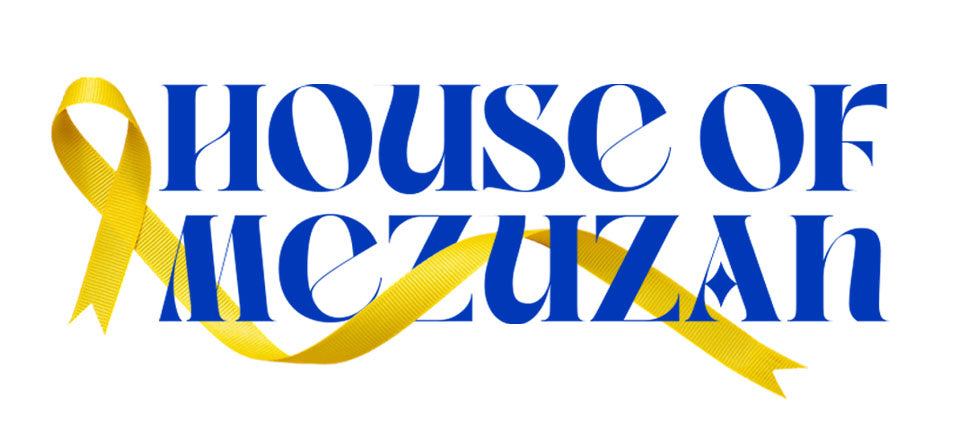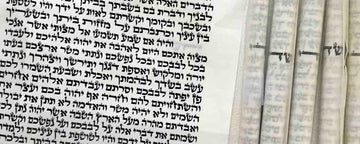Distinguishing Ashkenazi and Sephardic Traditions in Kosher Mezuzah Scrolls
At House of Mezuzah, we celebrate the rich diversity within Jewish traditions. One fascinating aspect of this diversity is the differences between Ashkenazi and Sephardic mezuzah scrolls. These variations reflect the distinct cultural and historical backgrounds of these two major Jewish communities. This article explores the key differences between Ashkenazi and Sephardic mezuzah scrolls, providing insight into their unique characteristics and significance.
Historical Background of Ashkenazi and Sephardic Jews
Ashkenazi Jews
Ashkenazi Jews trace their origins to Central and Eastern Europe. Over centuries, they developed distinct cultural, liturgical, and halachic practices. This community's traditions have been shaped by the historical experiences of Jews in Germany, Poland, Russia, and other parts of Europe.
Sephardic Jews
Sephardic Jews originate from the Iberian Peninsula, primarily Spain and Portugal. After the expulsion from Spain in 1492, many Sephardic Jews settled in North Africa, the Middle East, and parts of Europe. Their customs reflect a blend of influences from their varied diasporic communities.
Script Style: Beit Yosef vs. Arizal
Beit Yosef Script (Ashkenazi)
Ashkenazi mezuzah scrolls are typically written in the Beit Yosef script, named after Rabbi Joseph Caro. This script style is characterized by distinctive letter forms and precision. Each letter must be written clearly to ensure the scroll is kosher.
Arizal Script (Sephardic)
Sephardic mezuzah scrolls are usually inscribed in the Arizal script, named after Rabbi Isaac Luria (the Ari). The Arizal script is known for its rounded letter shapes and reflects the Kabbalistic teachings of Rabbi Luria.
Pronunciation and Textual Differences
Pronunciation Variations
The differences in pronunciation between Ashkenazi and Sephardic Jews are reflected in the mezuzah scrolls:
- Ashkenazi Pronunciation: Influenced by European heritage, affecting how certain letters and vowels are written.
- Sephardic Pronunciation: Closer to modern Hebrew, impacting the script's phonetic representation.
Textual Nuances
While the core text of the mezuzah scrolls remains consistent, minor textual nuances may appear due to regional customs:
- Ashkenazi Scrolls: May include specific traditions in the writing influenced by Ashkenazi halachic authorities.
- Sephardic Scrolls: Reflect the customs of Sephardic rabbinic leaders, including variations in the spacing of letters.
Materials and Parchment Preparation
Parchment Quality
Both Ashkenazi and Sephardic mezuzah scrolls are written on parchment from kosher animal hides, but preparation methods can vary:
- Ashkenazi Parchment: Often sourced from regions with historical Ashkenazi communities.
- Sephardic Parchment: May come from areas with a strong Sephardic presence, using traditional techniques.
Ink and Writing Tools
The ink and quills used for writing mezuzah scrolls follow traditional methods:
- Ashkenazi Tradition: Specific ink and quills maintain the authenticity of the Beit Yosef script.
- Sephardic Tradition: Different materials may be used, aligning with the Arizal script's requirements.
Cultural Significance and Modern Practices
Preserving Heritage
Both Ashkenazi and Sephardic Jews value preserving their unique traditions. The differences in mezuzah scrolls highlight the rich tapestry of Jewish heritage and the importance of maintaining these practices.
Contemporary Adaptations
In today's globalized world, many Jewish communities blend traditions. However, the distinct styles of mezuzah scrolls remain a symbol of each community's historical journey.
Conclusion: Celebrating Diversity in Jewish Mezuzah Traditions
Understanding the differences between Ashkenazi and Sephardic mezuzah scrolls enriches our appreciation of Jewish cultural diversity. At House of Mezuzah, we honor these traditions by offering a range of mezuzah scrolls and cases that cater to both Ashkenazi and Sephardic customs. Whether you are looking to buy a mezuzah online or seeking to learn more about your heritage, we are here to support and celebrate the unique practices that make the Jewish faith so vibrant.


